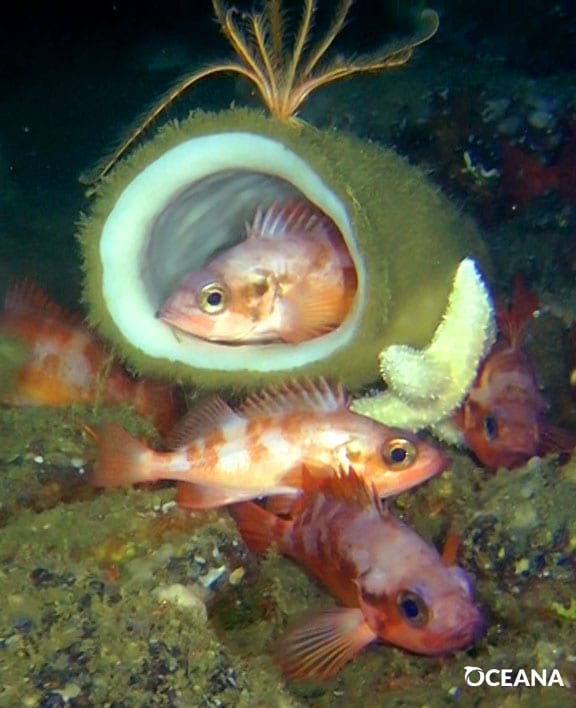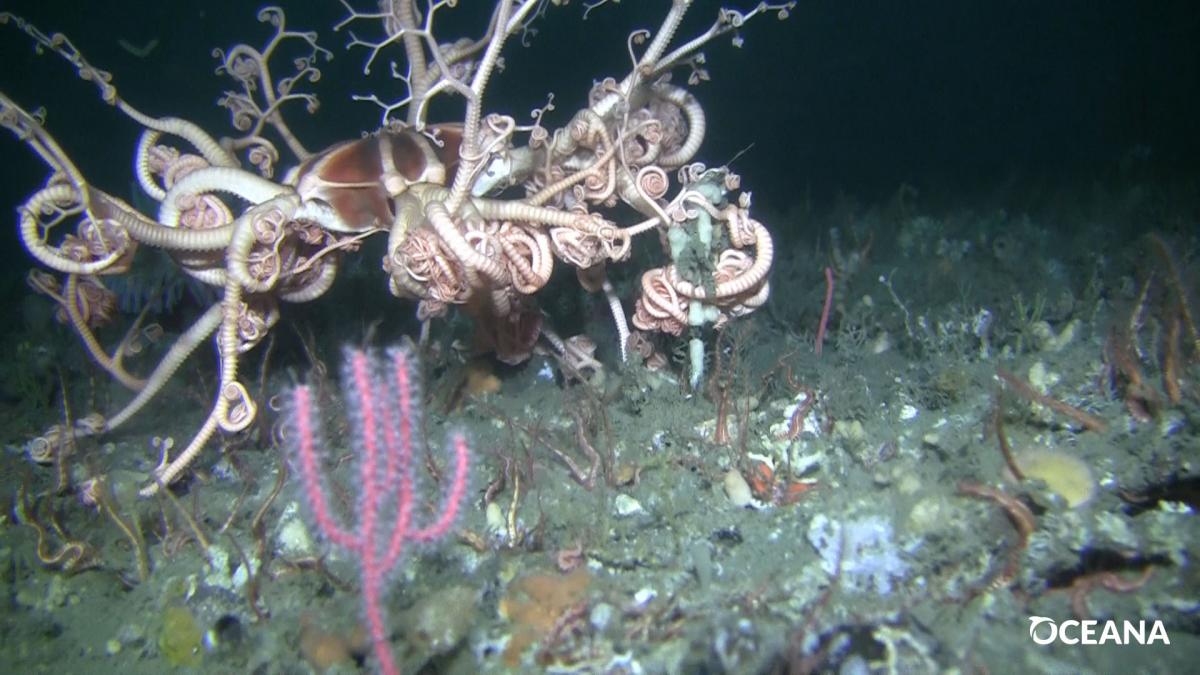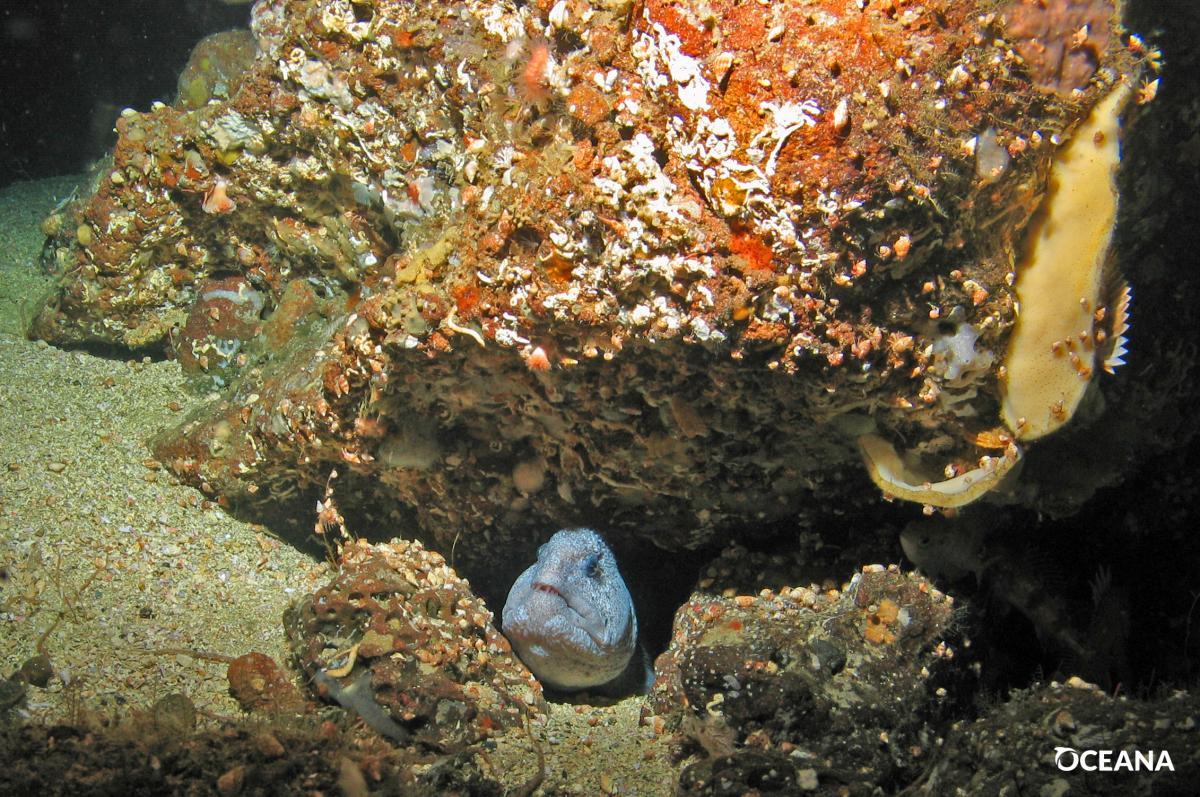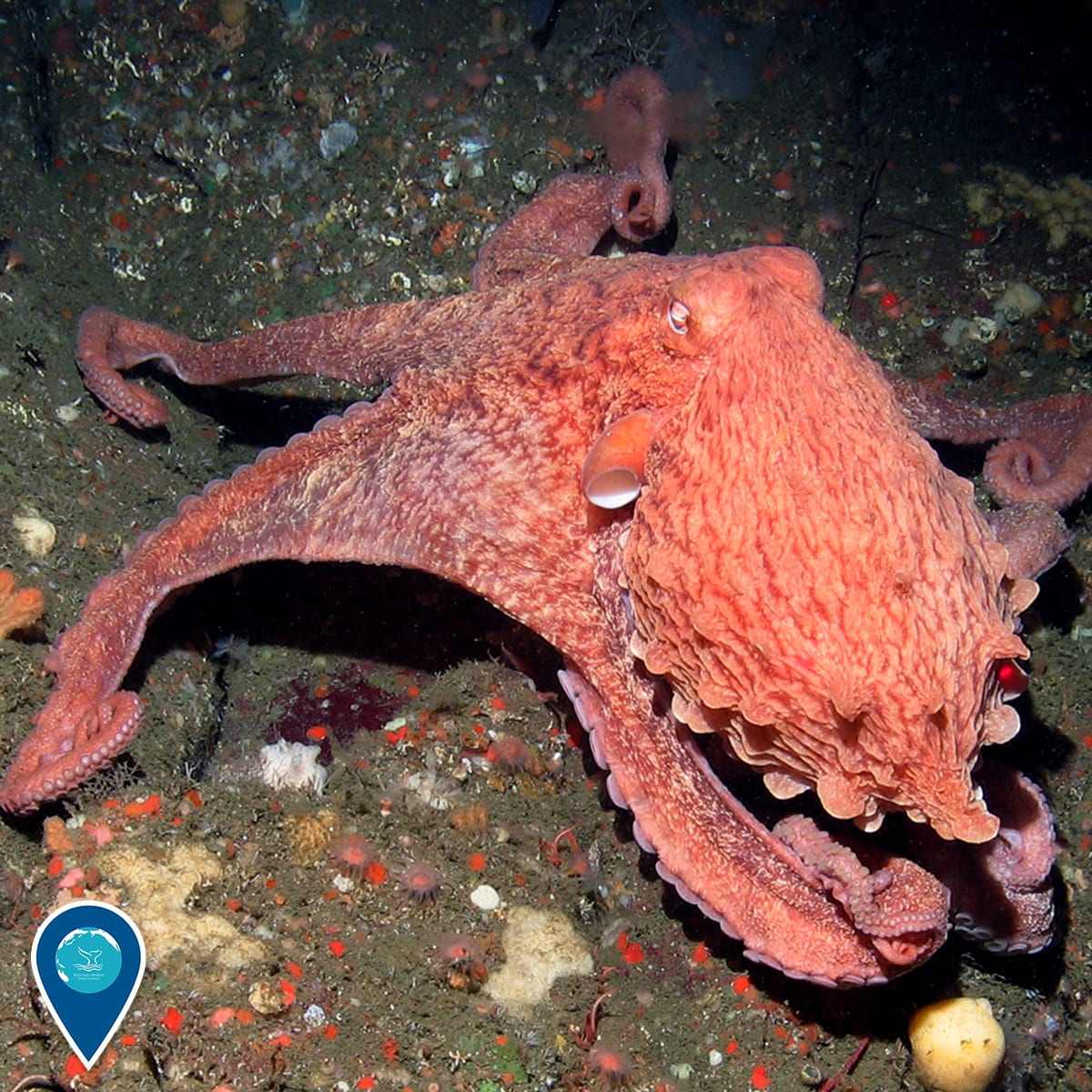The Living Seafloor Supports Ocean Creatures Like These:
Sharpchin Rockfish

A sharpchin rockfish finds shelter inside a sponge at Daisy Bank, offshore Oregon. © Oceana, 2013
Rockfish come in many different sizes, shapes, colors, and patterns. Some appear to have stripes whereas others seem to be splotchy. There are more than 68 species of rockfish in ocean waters off the U.S. West Coast. These fish use seafloor habitats as areas for shelter, feeding, and breeding. Some rockfish grow slowly, do not reproduce until they are older (5-20 years), and some species can live to be over 100 years old. For these reasons some rockfish species are susceptible to overfishing, and several were overfished two decades ago. Strict controls on rockfish catch combined with habitat protections have turned the tide on rockfish overfishing and populations are now rebuilding. Some species like yelloweye rockfish have not yet recovered from overfishing, while others like canary rockfish were only recently rebuilt in 2015. Sharpchin rockfish—like the one in this photo—range from Semisopochnoi Island, Aleutian Islands, Alaska, to San Diego, California. They are most common at depths of 100 to 300 m (330-990 ft). Rockfish feed on plankton, small crustaceans, and fish.
Basket Star

This basket star (Gorgonocephalus eucnemis) decorates the seafloor at Cape Arago Reef, offshore of Oregon. © Oceana, 2013
Basket stars have many twisty, curvy arms containing little, sharp hooks they use to capture prey. Nocturnal feeders, they rely on ocean currents to bring tiny zooplankton (crustaceans, arrow worms, and sometimes fish larvae and jellies) their way. After plucking its food from the water current, it uses its many unfurling arms to deliver its meal toward its mouth, which is located on the lower surface of the central disk that is its main body. Like their brittle star cousins, basket stars can regenerate their arms should they break off. Basket stars range from the Bering Sea to Laguna Beach, California and can be found at depths of 33 feet to 6600 feet.
Wolf Eel

A Wolf eel peaks out from inside a rocky crevice off Southern California. © Oceana, 2016
Wolf eels are one of five species of “wolf fishes.” They grow to about six feet in length and live in caves and rock shelters. They use their teeth and strong jaws to chomp on hard-shelled animals such as snails, clams, crabs, and sea urchins. Wolf eels mate for life and mom and dad together take good care of their offspring. Wolf eels live in the North Pacific from the Sea of Japan, to islands off the coast of Alaska, to the coast of southern California.
Giant Pacific Octopus

A Giant Pacific Octopus sighted in the Greater Farallones National Marine Sanctuary © NOAA
There are 300 different species of octopuses, one of which is the Giant Pacific Octopus. Also referred to as “GPO”, the Giant Pacific Octopus is the largest of octopus species—often 50 pounds and 15 feet across. It can quickly alter the color and texture of its skin to camouflage itself by stretching open or squeezing shut pigment cells. Their amazing color displays are all the more interesting given these animals are color blind. An adult female can have up to 280 suckers on each arm and eats crabs, clams, snails, small fishes and even other octopuses. The GPO ranges from southern California, northward along the coast of North America, across the Aleutian Islands and southward to Japan and can live at depths of up to 5,000 feet.



